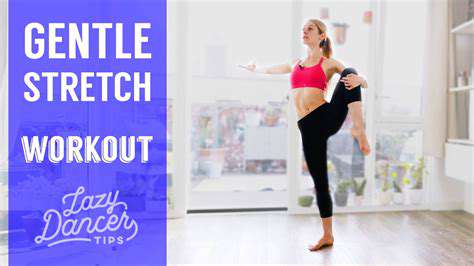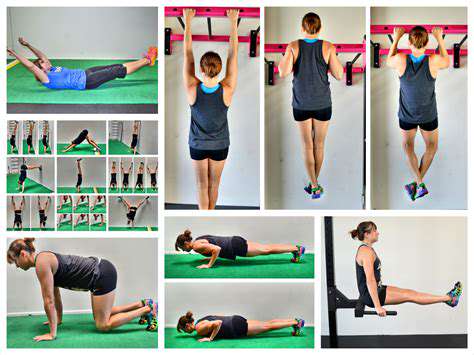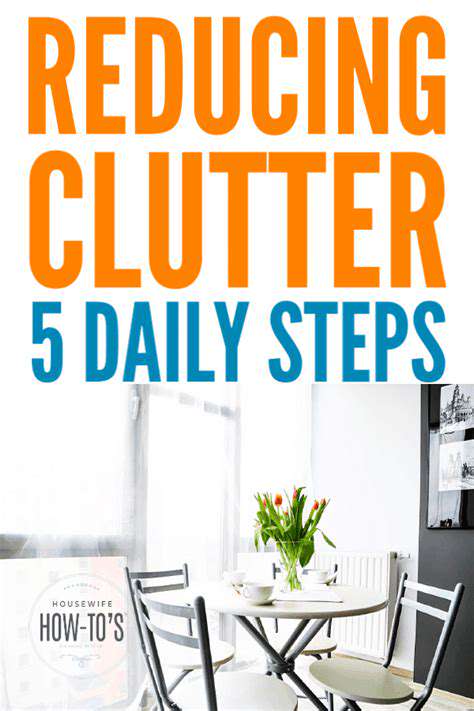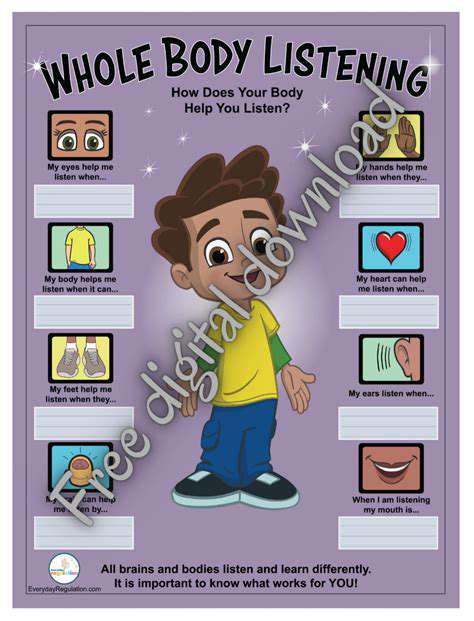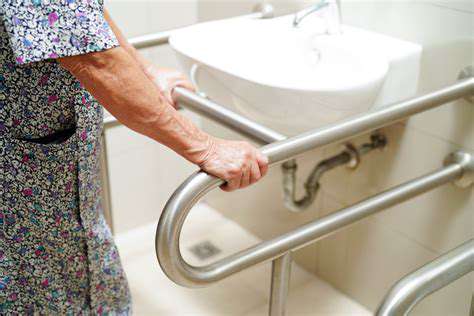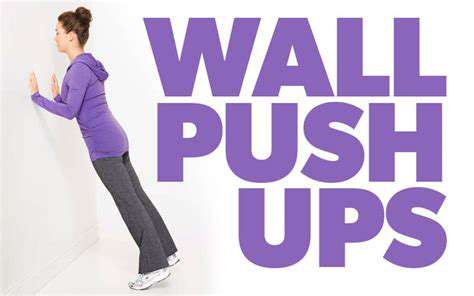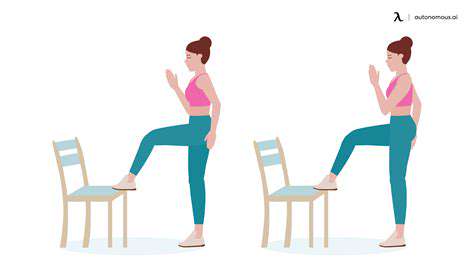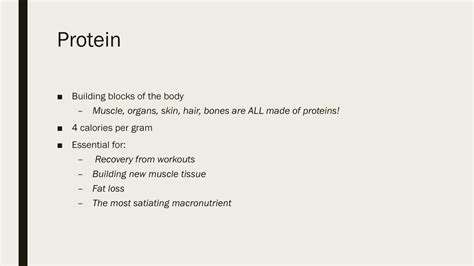Chair Yoga for Seniors with Limited Mobility: Neck and Shoulder Relief
Gentle neck stretches, performed from the comfort of a chair, are an excellent way to improve posture and alleviate stiffness. These simple movements can target specific muscle groups in the neck and upper back, promoting a sense of relaxation and well-being. Regular practice can help prevent tension headaches and improve overall neck health. By incorporating these stretches into your daily routine, you can experience significant benefits for your neck and shoulder health.
Head Tilts: Releasing Tension
A simple head tilt can do wonders for relieving tension in the neck muscles. Sit upright in your chair, ensuring your back is straight. Gently tilt your head to one side, keeping your shoulders relaxed. Hold the stretch for a count of 15-20 seconds, feeling the stretch along the opposite side of your neck. Repeat on the other side. These gentle movements can help release tension that may be building up throughout the day. This simple exercise can make a huge difference in your neck comfort.
Neck Rotations: Enhancing Flexibility
Neck rotations are another effective way to improve neck flexibility and range of motion. Start by sitting upright in your chair, with your back straight. Slowly rotate your head to one side, bringing your ear towards your shoulder. Keep your shoulders relaxed and your gaze forward to avoid straining the muscles. Hold the stretch for a count of 15-20 seconds, then repeat on the other side. These rotations can help to increase the range of motion and reduce stiffness in your neck.
Chin Tucks: Improving Posture
Chin tucks are a fantastic exercise for improving posture and strengthening the muscles at the base of your neck. Sit tall in your chair, keeping your back straight. Slowly tuck your chin towards your chest, as if you were trying to make a double chin. Hold the position for a count of 5-10 seconds. Repeat this exercise 10-15 times, focusing on maintaining good posture throughout. Improving posture not only enhances your appearance but also promotes better spinal alignment and reduces strain on your neck muscles.
Shoulder Blade Squeeze: Supporting the Neck
Squeezing your shoulder blades together can provide support to your neck and upper back. Start by sitting upright in your chair, with your back straight. Imagine pulling your shoulder blades together, as if you were trying to pinch them together. Hold this position for a count of 5-10 seconds. Repeat this exercise 10-15 times. These stretches help to strengthen the muscles that support your neck, providing better stability and support throughout the day. Adding this stretch to your routine will help to improve the overall health and well-being of your neck.
Choosing the right measuring tools is crucial for ensuring accurate and reliable results in various applications, from construction and manufacturing to scientific research and everyday tasks. Different types of measurements require different tools, and selecting the wrong tool can lead to significant errors and ultimately, costly mistakes. Understanding the specific needs of the project or task is paramount, as factors like the object's size, material, and the desired level of precision all play a critical role in the selection process. For instance, a simple ruler might suffice for measuring the length of a table, while a more sophisticated caliper might be necessary for precise measurements of metal parts in a machine shop.
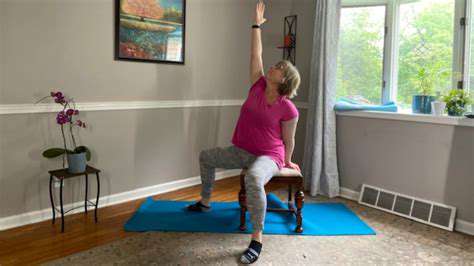
Breathing Techniques for Enhanced Relaxation
Diaphragmatic Breathing
Diaphragmatic breathing, often called belly breathing, is a fundamental relaxation technique that involves engaging the diaphragm, the muscle separating your lungs from your abdomen. When you practice diaphragmatic breathing, air fills your lungs more completely, promoting a sense of calm and reducing feelings of stress. This technique can be particularly beneficial for seniors with limited mobility as it requires minimal physical movement and can be practiced anywhere, anytime. Learning to use your diaphragm effectively can significantly enhance your relaxation response and overall well-being.
To practice diaphragmatic breathing, find a comfortable seated position, either in a chair or on the floor. Place one hand on your chest and the other on your abdomen. Inhale slowly and deeply through your nose, feeling your abdomen rise as your diaphragm expands. Exhale slowly through your mouth, allowing your abdomen to fall. Repeat this process several times, focusing on the sensation of your breath filling and emptying your lungs. This mindful focus on your breath can help calm your mind and body, preparing you for relaxation and overall well-being.
Alternative Breathing Exercises
Beyond diaphragmatic breathing, there are other accessible breathing exercises that can promote relaxation. Box breathing, for instance, involves inhaling for a count of four, holding your breath for a count of four, exhaling for a count of four, and holding your breath again for a count of four. This rhythmic pattern creates a sense of control and stability, helping to calm the nervous system and reduce anxiety. The structured nature of box breathing makes it a valuable tool for managing stress, especially in moments of heightened anxiety.
Another simple technique is alternate nostril breathing (Nadi Shodhana). This involves using your fingers to gently block one nostril at a time while inhaling and exhaling through the other. This ancient practice, deeply rooted in yoga and meditation, can promote balance and calm the mind. Consistent practice of alternate nostril breathing can help regulate your nervous system, leading to a more relaxed and focused state of mind.
These alternative breathing exercises can be incorporated into your chair yoga practice to further enhance relaxation and stress reduction. They are adaptable to various physical limitations and can be practiced anywhere, making them a valuable addition to your relaxation toolkit.
Practicing these techniques regularly can significantly enhance your overall well-being and help manage stress and anxiety, particularly beneficial for seniors with limited mobility. Remember to listen to your body and modify the exercises as needed.
These techniques can be incredibly helpful in managing stress and promoting relaxation, especially within the context of chair yoga for seniors.
